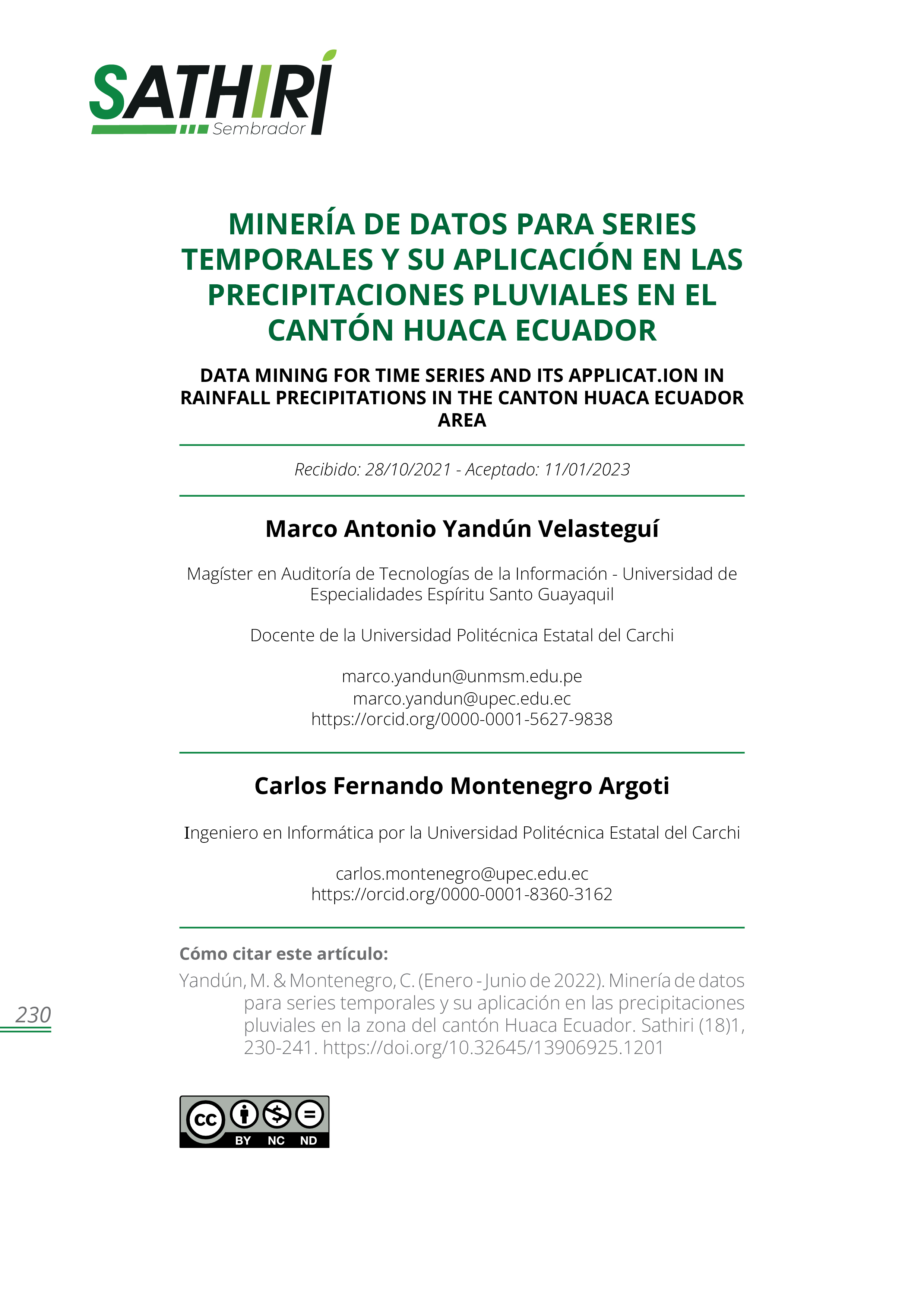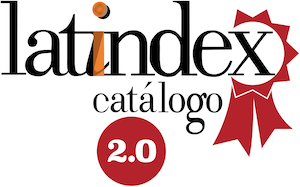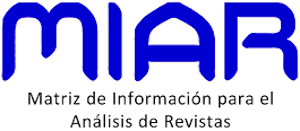Data mining for time series and its applicat.ion in rainfall precipitations in the canton Huaca Ecuador area
DOI:
https://doi.org/10.32645/13906925.1201Keywords:
Data mining, data analysis, CRISP-DM, time series, moving averagesAbstract
In the San Pedro de Huaca canton there is the San Francisco Experimental Farm, it has a meteorological station that collects data related to the climate and among them also records of rainfall are obtained, with these data a minimum analysis is made including the data historical rainfall, I do not know has evidenced the use of data mining tools to determine rainfall or generate a forecast, the above is obtained through ancestral knowledge of farmers. With the use of the data stored by the meteorological station with its variables and units of measurement, the research was carried out that is based on the application of predictive data mining techniques applied the Cross Industry Standard Process for Data Mining CRISP-DM methodology, (Industry standard process for data mining), fulfilling all its phases. For the modeling stage, mobile forecasts are applied, for the forecast of time series, where it makes predictions with historical data in this case 2019 and 2020, to carry out all this process the programming language R was used since presents great advantages in data analysis, the results obtained correspond to the rainfall forecasts obtained for each month of the year 2021, the unit of measurement of these data is in millimeters per square meter, this information is displayed in a web application shinnyapp.io displaying and downloading the data analysis, publicly available.
References
Escutia, I. (2019). Descomposición de series de tiempo. Recuperado de https://rstudio-pubs-static.s3.amazonaws.com/546278_da6272365edd4444a4e7ccf6b17978fe.html
Hernández Sampieri, R., Fernández Collado, C., & Baptista Lucio, M. del P. (2018). Metodología de la Investigación (Quinta Edi). México: Mc Graw Hill.
Hidalgo-Guijarro, J., Yandún-Velasteguí, M., Bolaños-Tobar, D., Borja-Galeas, C., Guevara, C., Varela-Aldás, J., ... & Rivera, R. (2019, September). Preprocessing Information from a Data Network for the Detection of User Behavior Patterns. In International Conference on Human Systems Engineering and Design: Future Trends and Applications (pp. 661-667). Springer, Cham.
Ilbay Yupa, M. L. (2019). “tendencia espacio-temporal de la precipitación, su agresividad y concentración en la región interandina del ecuador”. Universidad Nacional Agraria La Molina.
IONOS. (2018). Software de data mining: realiza análisis de datos más efectivos. Recuperado de https://www.ionos.es/digitalguide/online-marketing/analisis-web/software-de-data-mining-las-mejores-herramientas/
León Guzmán, E. (2017). Minería de Datos Módulo Diplomado. Módulo Universidad Nacional de Colombia, 1–19. Recuperado de http://disi.unal.edu.co/~eleonguz/cursos/md/presentaciones/Sesion5_Metodologias.pdf
Mancero, H. (2017). Estimación del coeficiente de hurst de las series temporales de tráfico vehicular en zonas urbanas. Universidad de las Fuerzas Armadas.
Ortiz Farro, P. E. (2017). “Minería de datos con series de tiempo en el desarrollo e implementación del sistema inteligente que predice la producción de arroz en el ámbito de la Gerencia Regional de Agricultura – Lambayeque.” Universidad Señor De Sipán.
Rivera, S. H., Lema, L. Z., Freire, A. M., Rojas, L. V., & Villa, A. E. (2018). Métodos de clasificación en minería de datos meteorológicos. Revistas ESPOCH, 107–113.
Unir. (2019). Lenguaje R, ¿qué es y por qué es tan usado en Big Data? Recuperado de https://www.unir.net/ingenieria/revista/lenguaje-r-big-data/
Vazquez, M. (2018). Minería de datos para generación de reglas de tendencia de precipitación pluvial en el estado de Morelos. Ingeniería-Revista Académica de la facultad de Ingeniería, 22, 9–24.
Zamora Villalobos, T. F. (2018). Aplicación De Tecnicas De Mineria De Datos Para Pronósticos Del Sector Agrícola. Pontificia Universidad Católica De Valparaíso.

Downloads
Published
Issue
Section
License
Copyright (c) 2023 Marco Antonio Yandún Velasteguí , Carlos Fernando Montenegro Argoti

This work is licensed under a Creative Commons Attribution-NonCommercial-NoDerivatives 4.0 International License.
El autor mantiene los derechos morales e intelectuales de su obra, autorizando a la editorial de la revista Sathiri la difusión y divulgación de su contenido con fines estrictamente académicos y de investigación, sin fines de lucro. Así mismo, se autoriza que la obra sea descargada y compartida con otras personas, siempre y cuando no sea alterada y se reconozca su autoria.





















